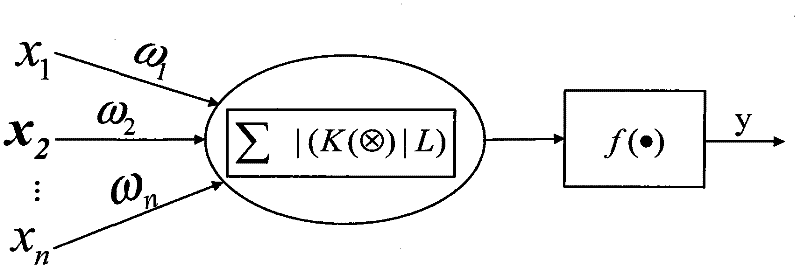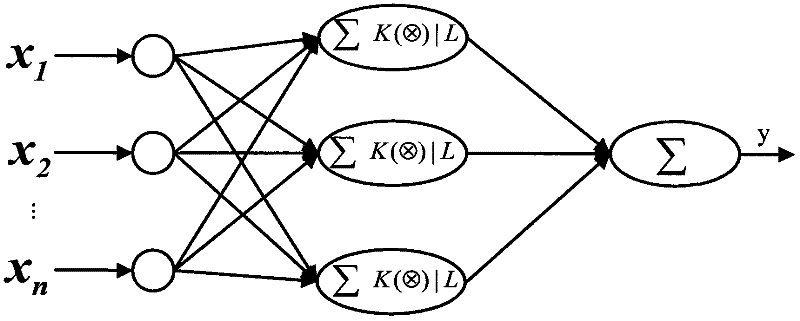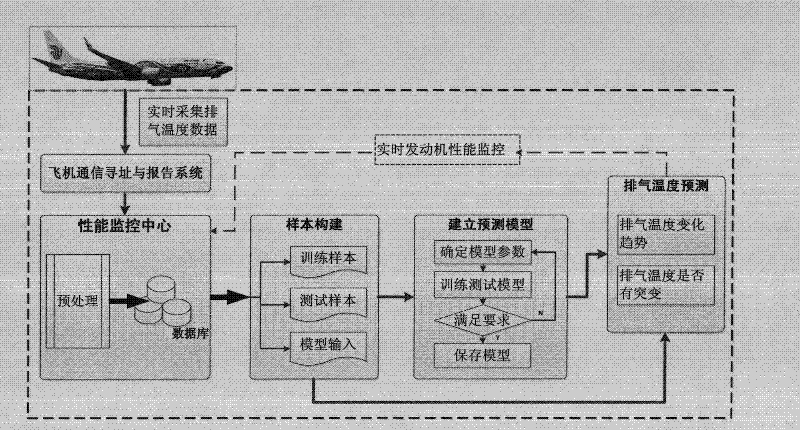Method for monitoring exhaust temperature of aircraft engine
A technology for aero-engine and exhaust gas temperature, which is applied to engine components, combustion engines, machines/engines, etc. It can solve the problems of lack of theoretical basis for the selection of the number of basis functions, loss of information, loss of accuracy, etc., to improve condition monitoring and maintenance. The effect of guarantee level, flight safety, and high prediction accuracy
- Summary
- Abstract
- Description
- Claims
- Application Information
AI Technical Summary
Problems solved by technology
Method used
Image
Examples
Embodiment Construction
[0017] The method steps of this embodiment are as follows:
[0018] (1) Collect the engine exhaust temperature data through the temperature sensor installed on the aeroengine, and transmit it to the engine performance monitoring center on the ground through the aircraft communication addressing and reporting system for preprocessing and storage;
[0019] (2) Extract the historical data of engine exhaust temperature for a specified period from the database of the engine performance monitoring center to form a one-dimensional exhaust temperature time series. On this basis, construct a multi-dimensional training sample set and test sample for establishing and testing the prediction model set and the predictive model input for prediction,
[0020] Record the time series composed of historical data of engine exhaust temperature as Select the first m data to form an input vector to predict the m+1th data, and the following matrix can be obtained:
[0021] X ...
PUM
 Login to View More
Login to View More Abstract
Description
Claims
Application Information
 Login to View More
Login to View More - R&D
- Intellectual Property
- Life Sciences
- Materials
- Tech Scout
- Unparalleled Data Quality
- Higher Quality Content
- 60% Fewer Hallucinations
Browse by: Latest US Patents, China's latest patents, Technical Efficacy Thesaurus, Application Domain, Technology Topic, Popular Technical Reports.
© 2025 PatSnap. All rights reserved.Legal|Privacy policy|Modern Slavery Act Transparency Statement|Sitemap|About US| Contact US: help@patsnap.com



